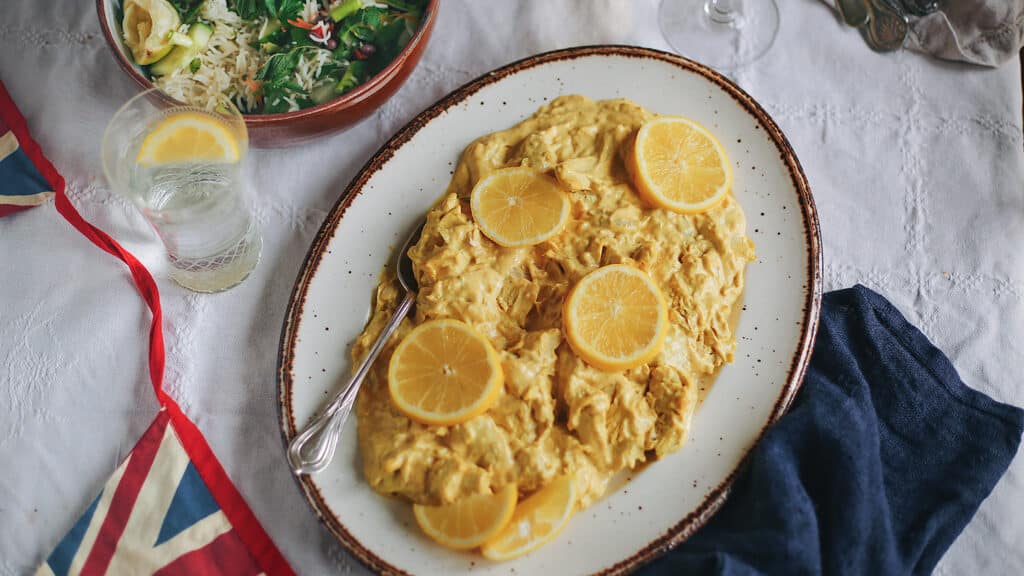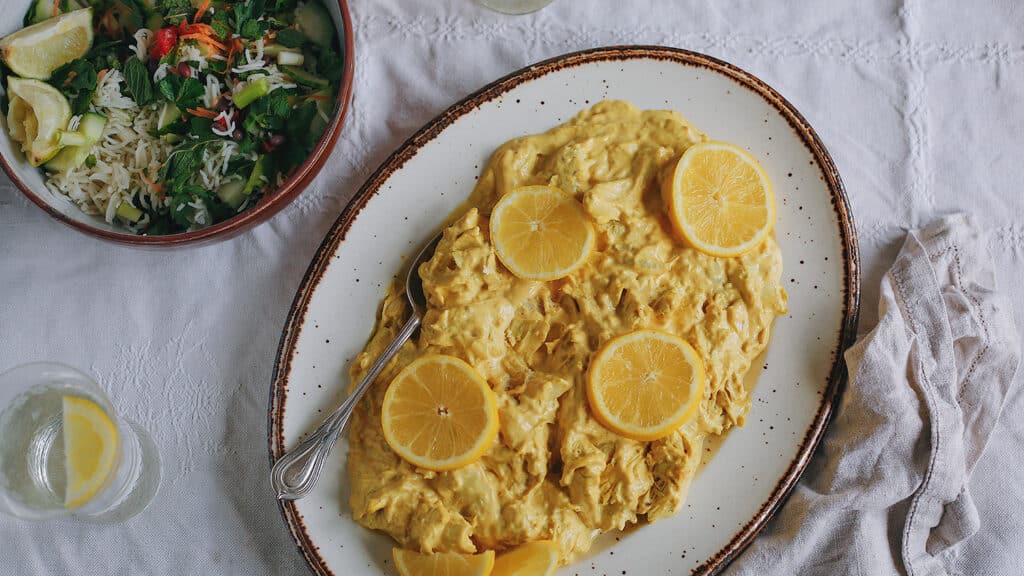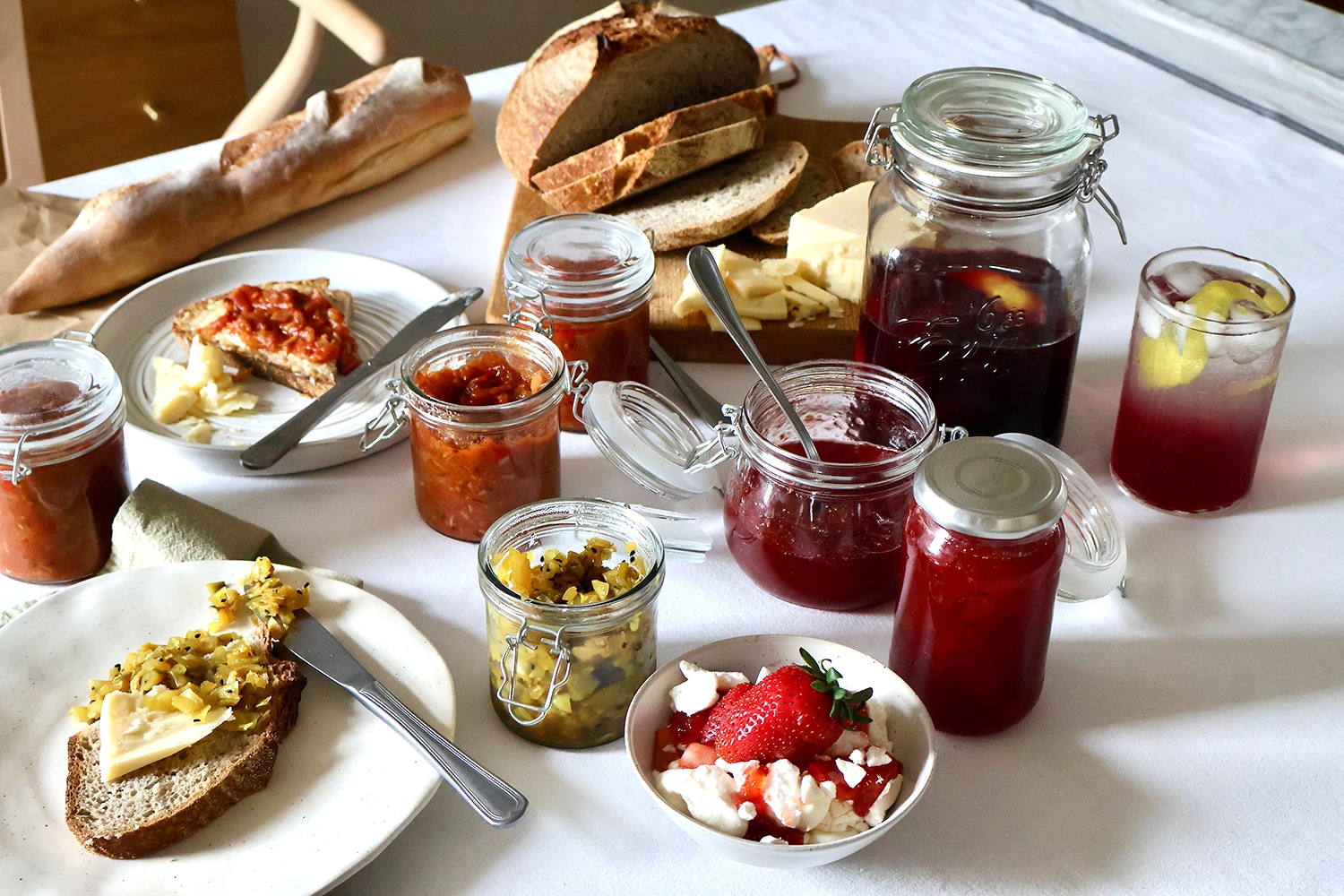Crowning glory
Mark Riddaway tells the story of coronation chicken


“BACK IN THE 1950S CHICKEN WAS STILL CONSIDERED A LUXURY MEAT, LARGELY RESERVED FOR THE TABLES OF THE WEALTHY”
Image: Jenna Roberts (@JennaFifi)
When Edward VII came to the throne in 1902, a Lincolnshire farmer decided to honour the new monarch by giving his name to a new breed of potato – the King Edward – which went on to become one of the great staples of British cookery, a source of some of the very best roasties you’ll ever eat. Half a century later, his great-granddaughter Queen Elizabeth II had a similarly indirect influence upon British cuisine when her coronation inspired the creation of one of the nation’s most misunderstood sandwich fillings: coronation chicken.
That such an auspicious occasion should result in so seemingly prosaic a dish was, in a way, entirely fitting. The Queen’s coronation ceremony took place on 2nd June 1953, and despite being a triumphant affair, the events of that day carried a distinct air of post-war austerity. The official banquet at Buckingham Palace involved a restrained four-course meal – a starter of chicken consommé, a main course of filet de boeuf mascotte (fillet of beef with artichokes, cocotte potatoes and truffle), a salad, and a simple dessert of mango ice cream.
To put this in context, at James II’s coronation in 1685 the first course alone consisted of 46 different dishes, brought into Westminster Hall by a procession of 73 people, including three on horseback. At Henry VI’s coronation in 1429, the menu included boars’ heads “in castles armed with gold”, a roasted peacock that had been painstakingly stuffed back into its own skin and feathers, a fritter “like the sun”, and a jelly illustrated with “the writing and musical notation of Te Deum Laudamus”. Henry himself was still a month short of his eighth birthday and would probably have been perfectly happy with a nice cake.
Coronation chicken was invented not for the main banquet, as is often stated, but for a lunchtime function attended by several hundred foreign dignitaries who were in London for the celebrations. The dish tends to be attributed to the celebrity florist, interior designer and general domestic goddess Constance Spry, who was responsible for the flower arrangements at the coronation, and its recipe was published for the first time in 1956 in The Constance Spry Cookery Book – a vast, 1,000-plus-page masterpiece of 1950s home economics. In reality, coronation chicken (like most of the dishes in Spry’s book) was created by the florist’s friend and close collaborator Rosemary Hume. Hume was a respected chef who had founded the L’Ecole du Petit Cordon Bleu cookery school in Victoria in 1933. In 1946 Hume and Spry joined forces to open a domestic science school in Winkfield Place, Berkshire, and when the college’s students were asked to cater for the coronation lunch, Hume set about inventing a new dish for them to serve.
These days, we expect coronation chicken to be a vivid yellow gloop, sweet with sultanas and lumps of fruit and spicy with curry sauce. But Hume’s original dish, as is to be expected from a woman who trained in Paris under the classical culinary master Henri-Paul Pellaprat, was very different to the oozing sandwich filling that would come to take its name. This was a subtle, creamy concoction, delicate in flavour and created with not a single sultana in sight. It was designed to be served with a rice salad rather than splodged between slices of bread.
Most of what you need to recreate Hume’s version can be bought at Borough Market. It all begins with the chicken, of course, which back in the 1950s was still considered a luxury meat, largely reserved for the tables of the wealthy. You’ll be able to buy suitably regal, slow-growing breeds at any of the Market’s butchers, all of them packed with the deep flavours such birds were valued for in the days before battery cages, high-protein feeds and intensive drug regimes turned chicken into a cheap, bland and ethically questionable staple.
Exactly what the Queen thought of coronation chicken was not a matter of public record. One thing is certain, though: it’s an easier dish to produce at home than re-stuffed peacock.
Mark Riddaway is the author of Borough Market: Edible Histories (Hodder & Stoughton)

